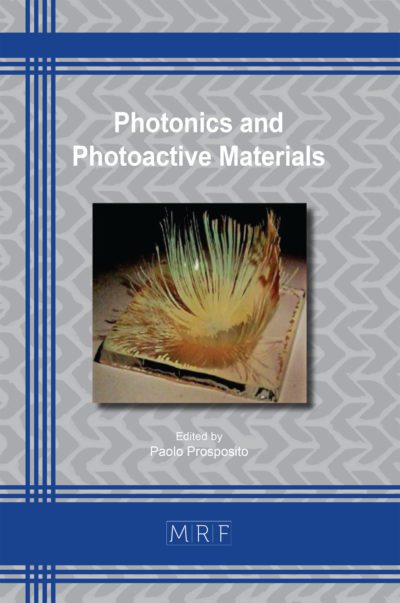Evaluation of hydronitrogen plasma treatment to improve the bonding process of PCM composite material in automotive: A case study
G. Gatti, M. Tropeano, L. Giorgini, L. Donati, F. Della Torca, G. Gentile, L. Mazzocchetti
Abstract. Atmospheric Pressure Plasma Treatment (APPT) technology, using hydronitrogen (95% N2 and 5% H2 composition) as the process gas, was used in this study to treat Prepreg Compression Molding (PCM) substrates to increase the lap shear strength of joints bonded with an epoxy adhesive. A crucial factor for plasma treatment is the torch working speed, which influences the treatment time of the substrate. In particular, it was found that the speed of 100 mm/s increased the lap shear strength by about three times compared to that of the untreated joints. Therefore, the mechanisms underlying the improvements in the lap shear strength of the bonded PCM joints were investigated. It was found that the surface roughness was not the main reason for the increase in the lap shear strength but the surface free energy (SFE). After plasma treatment, there is a significant increase in SFE which indicates a chemical change in the substrate surface. These functional groups introduced by APPT, especially those containing oxygen or amino groups, can covalently bind with the adhesive forming strong bonds and leading to the increase in the lap shear strength of the bonded joints.
Keywords
Plasma Treatment, PCM Composites, Surface Preparation, Adhesive
Published online 5/7/2025, 8 pages
Copyright © 2025 by the author(s)
Published under license by Materials Research Forum LLC., Millersville PA, USA
Citation: G. Gatti, M. Tropeano, L. Giorgini, L. Donati, F. Della Torca, G. Gentile, L. Mazzocchetti, Evaluation of hydronitrogen plasma treatment to improve the bonding process of PCM composite material in automotive: A case study, Materials Research Proceedings, Vol. 54, pp 564-571, 2025
DOI: https://doi.org/10.21741/9781644903599-61
The article was published as article 61 of the book Material Forming
![]() Content from this work may be used under the terms of the Creative Commons Attribution 3.0 license. Any further distribution of this work must maintain attribution to the author(s) and the title of the work, journal citation and DOI.
Content from this work may be used under the terms of the Creative Commons Attribution 3.0 license. Any further distribution of this work must maintain attribution to the author(s) and the title of the work, journal citation and DOI.
References
[1] Mallick, P.K. (2007). Fiber-Reinforced Composites: Materials, Manufacturing, and Design, Third Edition (3rd ed.). CRC Press. https://doi.org/10.1201/9781420005981
[2] Zoran Kožuh, Slobodan Kralj, and Želimir Cvirin. “Advantages and Application Possibilities of Adhesive Bonding.” Promet 9.1-2 (2012): 33-40. https://traffic.fpz.hr/index.php/PROMTT/article/view/1066
[3] W. Strunk Jr., E.B. White, The Elements of Style, third ed., Macmillan, New York, 1979.
[4] Thomas, Michael, and K. L. Mittal. Atmospheric Pressure Plasma Treatment of Polymers :
Relevance to Adhesion. Adhesion and Adhesives: Fundamental and Applied Aspects. 2013.
[5] Yasuda, H. K., Sharma, A. K., Hale, E. B., & James, W. J. (1982). Atomic Interfacial Mixing to Create Water Insensitive Adhesion. The Journal of Adhesion, 13(3–4), 269–283. https://doi.org/10.1080/00218468208073191
[6] Zaldivar RJ, Nokes J, Steckel GL, Kim HI, Morgan BA. The Effect of Atmospheric Plasma Treatment on the Chemistry, Morphology and Resultant Bonding Behavior of a Pan-Based Carbon Fiber-Reinforced Epoxy Composite. Journal of Composite Materials. 2010;44(2):137-156. https://doi.org/10.1177/0021998309345343
[7] Anand, M., Cohen, R.E. and Baddour, R.F. (1981). Surface Modification of Low Density Polyethylene in a Fluorine Gas Plasma, Polymer, 22: 361. https://doi.org/10.1016/0032-3861(81)90048-3
[8] Wang, S., Min, J., Lin, J., Sun, C., & Yang, S. (2018). Effect of Atmospheric Pressure Plasma Treatment on the Lap-Shear Strength of Adhesive-Bonded Sheet Molding Compound Joints. Automotive Innovation (Online), 1(3), 237–246. https://api.semanticscholar.org/CorpusID:140071571
[9] Bascom, W., Cottington, R. and Singleterry, C. (1972). Contact Angle, Wettability, and Adhesion, In: Gould, R.F. (ed.). Advances in Chemistry Series 43, p. 355, Am. Chemical Society, Washington












